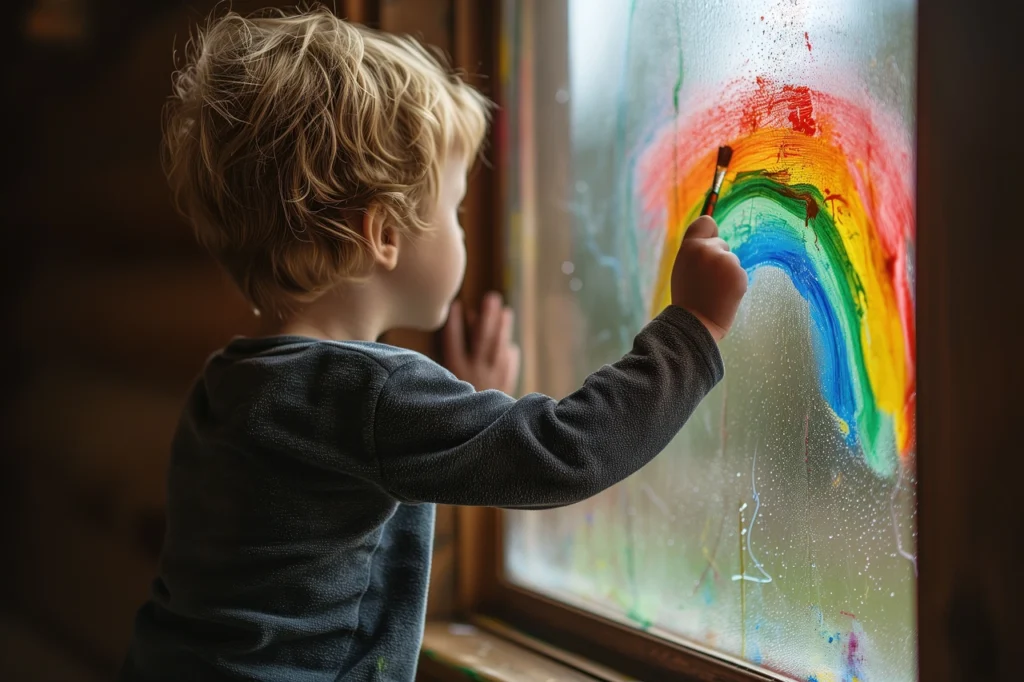What is Autism: Neurodevelopmental disorder is characterized by limited interests, repetitive behaviour, and difficulties with social communication; it is also known as Autism Spectrum Disorder (ASD). It has been found that 1 in 36 children has autism spectrum disorder, according to the Centers for Disease Control and Prevention (CDC).

What Autism Looks Like
It is important to note that autism is a spectrum disease, which means that it affects individuals in various ways and at different levels. Autism has different signs for each person. But here are a few frequent symptoms that have been found via research:
- Communication and social interaction are two areas where persons with autism often struggle.
- They are very interested in a few things or a small group of things.
- They are afraid to look at each other while talking.
- Things that other people think are normal, like sounds, touches, smells, or sights, can bother them.
- It’s hard for them to know what other people feel or think.
- They often feel nervous or angry in new places and at social events.
- They have trouble understanding or using words, body language, facial movements, or voice tone.
- It’s hard for them to get used to changes in their habit.
- They always think or do the same thing.
Different Kinds of Autism
Most people with autism have one of these five types. You can read about
- Asperger’s Syndrome: Doctors don’t use the word “Asperger’s syndrome,” but it was widely used before 2013. Based on the DSM-5 classification manual, this term is now called a “Level 1 spectrum illness.” Problems with task switching, emotional expression in speech, and social interaction with classmates and family members are hallmarks of this disease in youngsters.
- Autism Spectrum Disorder: When many people hear the word “autism,” this is usually what they picture. It has an impact on children under the age of three in terms of their social connections, communication, and play.
- Childhood Disintegrative Disorder: Disintegrative psychosis, Heller’s syndrome, and childhood disintegrative disorder are all terms for the same neurodevelopmental condition. Boys are more likely than girls to have childhood disintegrative disorder (CDD). A kid with this disease will have trouble communicating, adapting to new situations, and forming social relationships.
- Kanner’s Syndrome: The renowned Johns Hopkins University psychiatrist Leo Kanner identified a characteristic autism disease in 1943, known as Kanner’s syndrome. Kind, aware, and smart kids who have Kanner’s syndrome will look alike. Nevertheless, they are characterized by a lack of emotional attachment to others, an obsession with object manipulation, and communication and interaction difficulties.
- Pervasive Developmental Disorder: With Pervasive Developmental Disorder, kids have trouble learning to talk and interact with others. It’s a mild form of autism. Language development, walking, and other movement skills will be delayed in a child with a pervasive developmental disorder (PDD).

Autism in Children
Finding autism in kids early on can help them do better in school and life by using treatments that can help them work better and have fewer symptoms. Some observations could be:
- Failure to Reply: Missing the first year of life and yet unable to reply to their name.
- Language skills that are behind: speech and language skills that are behind.
- Unusual Reactions: Feelings: Too sensitive to some sounds, lights, or textures.
Autism in Adults
Adults with autism can be hard to diagnose because their symptoms are often different from those of children and may mix with those of other illnesses. Symptoms in adults include:
- Trouble with Social Interactions: Not being able to understand what other people say and do can make them feel alone and cause misunderstandings.
- Strict Routines: Unwavering commitment to predetermined patterns of conduct.
- Narrow Interests: A strong interest in one area, often excluding other activities.
How Does Autism Affect Daily Life?
Depending on how bad the autism is and how the person deals with it, it can affect daily life in many ways. Among the effects are:
- Problems with communicating: having trouble understanding humour, jokes, and body language.
- Sensitivity to sounds or lights: feeling too much of them.
- Autism makes it hard for some people to make friends and keep relationships going.
Does Autism Make You Sick?
Communication and behavioural issues are hallmarks of autism, a developmental problem rather than a medical condition. It’s not seen as a sickness that needs to be fixed; instead, it’s seen as a difference in brain growth that needs to be studied and helped.
What makes autism happen?
It’s still not clear what causes autism, but tests are being done all the time. According to research, however, environmental and genetic variables both contribute to its development. Among these factors may be the age of the parents at conception, genetic mutations, and specific environmental exposures during pregnancy.
Do genes cause autism?
Autism has a strong genetic background, as shown by studies of identical twins and families where autism runs in the family. However, environmental factors and the interaction of several genes, rather than just one, usually cause it.

Conclusion
Social and communication abilities are impacted by autism, a neurodevelopmental disease that falls on a continuum. This disorder has different signs in different people. Both kids and adults can have it.
A person with autism does not have a sickness; they have a problem that can be helped by behavioural treatments. Board-certifiebehaviouror analysts often oversee the work of many registered behavior technicians who carry out behaviour management plans.

